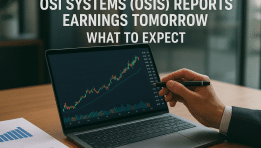Walmart Earnings: What to Look For From WMT
Analyzing Walmart Earnings: Key Indicators to Watch
Walmart, the world’s largest retailer, remains a central player in the global consumer market. Every earnings season, investors and analysts closely review its financial results to gauge the health of both the company and the broader retail sector. To properly interpret Walmart’s earnings, it’s essential to focus on specific indicators that highlight its financial strength, growth potential, and ability to adapt to changing consumer behavior.
Revenue Growth
Revenue growth is one of the most important measures of Walmart’s performance. Steady year-over-year revenue increases signal that the retailer is maintaining strong sales and customer demand across its Supercenters, discount stores, and e-commerce channels. Tracking how each segment contributes to overall revenue gives insights into where Walmart is excelling, whether through physical store operations or its growing online presence.
Same-Store Sales
Same-store sales, which measure performance from stores open for at least a year, provide a clear picture of how well Walmart’s existing outlets are performing without the boost from new locations. Growth in this metric indicates that Walmart is effectively attracting repeat customers and expanding sales per shopper, both of which are critical for long-term stability.
Profit Margins
Profit margins reveal how efficiently Walmart manages its operations. A rising operating margin often reflects successful cost control and strong pricing strategies. On the other hand, shrinking margins can point to challenges such as higher labor or supply chain costs, or pricing pressures from competitors. Investors should monitor whether margins remain consistent or fluctuate due to external pressures.
E-Commerce Growth
The shift toward digital shopping has transformed retail. For Walmart, growth in its e-commerce segment is now a major driver of overall performance. Expanding its online marketplace and delivery options allows the company to compete more directly with Amazon and other digital-first retailers. Strong online sales growth indicates Walmart’s ability to adapt to modern shopping habits and strengthen its market position.
Inventory Management
Managing inventory effectively is a crucial element of Walmart’s strategy. Excess inventory may suggest weak demand or misjudged trends, while insufficient stock can harm customer satisfaction and sales. Striking the right balance highlights Walmart’s supply chain efficiency and its ability to respond to shifting consumer needs.
Customer Traffic
Customer traffic, both in stores and online, is a strong leading indicator of Walmart’s performance. An increase in foot traffic or web visits typically leads to higher sales. Seasonal promotions, product availability, and economic conditions often influence these numbers. Monitoring traffic trends helps assess Walmart’s marketing strategies and consumer appeal.
Debt and Financial Stability
Debt levels also play a key role in evaluating Walmart’s financial health. While manageable debt can fund growth and expansion, excessive debt raises concerns about financial flexibility. Investors should watch metrics such as the debt-to-equity ratio and interest coverage ratio to ensure Walmart is balancing leverage responsibly.
Dividends and Share Repurchases
Walmart has a long history of rewarding shareholders through dividends. Consistent payouts reflect financial strength and stability. In addition, share repurchase programs can signal management’s confidence in the company’s long-term value. Together, these strategies highlight Walmart’s ability to return capital to investors while sustaining growth.
Competitor Comparison
No earnings analysis is complete without comparing Walmart’s performance to rivals such as Target, Costco, and Amazon. Outperforming competitors in revenue growth, margins, or e-commerce adoption suggests that Walmart is capturing market share and reinforcing its dominance. Benchmarking against peers provides valuable context for understanding Walmart’s competitive position.
The Impact of Consumer Behavior
Beyond financial metrics, consumer behavior plays a critical role in shaping Walmart’s earnings. Today’s shoppers demand convenience, low prices, and personalized experiences. Walmart’s efforts to adapt to these evolving preferences are directly tied to its growth prospects.
-
Online Shopping: The surge in e-commerce has reshaped retail. Walmart’s investments in its website, mobile app, and delivery services help meet consumer demand for convenience.
-
Price Sensitivity: Inflation and economic uncertainty make shoppers more budget-conscious. Walmart’s low-price positioning strengthens its appeal during such periods.
-
Sustainable Products: Increasing demand for organic and eco-friendly items requires Walmart to adjust inventory and expand private-label offerings.
-
Personalized Experiences: By leveraging data and AI, Walmart is tailoring product recommendations and marketing strategies to boost customer loyalty.
Future Growth Strategies
Walmart’s earnings calls often highlight strategic initiatives designed to meet shifting consumer needs. Expanding grocery delivery and pickup services, enhancing in-store shopping experiences, and strengthening private label brands are all central to maintaining customer loyalty. These efforts not only capture new shoppers but also deepen engagement with existing customers.
Conclusion
As Walmart prepares to release its earnings, the most important indicators to watch include revenue growth, same-store sales, profit margins, and e-commerce performance. At the same time, understanding shifts in consumer behavior—such as the growing demand for convenience, value, and sustainability—is critical in evaluating future growth prospects.
Walmart’s ability to manage its supply chain, control debt, and compete effectively against rivals will determine its long-term position in the retail landscape. For investors and analysts, looking beyond the numbers to the broader consumer and market context provides a clearer picture of Walmart’s potential. Ultimately, Walmart’s adaptability to evolving shopping habits and economic conditions will shape its success in the years ahead.
Comparison, examination, and analysis between investment houses
Leave your details, and an expert from our team will get back to you as soon as possible
* This article, in whole or in part, does not contain any promise of investment returns, nor does it constitute professional advice to make investments in any particular field.
To read more about the full disclaimer, click here- Articles
- •
- 9 Min Read
- •
- ago 4 minutes
 OSI Systems (OSIS) Reports Earnings Tomorrow: What To Expect
OSI Systems (OSIS) Reports Earnings Tomorrow: What To Expect
Earnings Report Expectations OSI Systems (OSIS) is preparing to release its much-anticipated earnings report tomorrow, an event closely followed by
- ago 4 minutes
- •
- 9 Min Read
Earnings Report Expectations OSI Systems (OSIS) is preparing to release its much-anticipated earnings report tomorrow, an event closely followed by
- orshu
- •
- 11 Min Read
- •
- ago 34 minutes
 OIL PRICES RISE AFTER SUPPLY CONCERNS RESURFACE AS UKRAINE PEACE TALKS STALL
OIL PRICES RISE AFTER SUPPLY CONCERNS RESURFACE AS UKRAINE PEACE TALKS STALL
Oil Prices Rise as Ukraine Peace Talks Stall: Supply Concerns Take Center Stage Introduction The global oil market remains one
- ago 34 minutes
- •
- 11 Min Read
Oil Prices Rise as Ukraine Peace Talks Stall: Supply Concerns Take Center Stage Introduction The global oil market remains one
- Lior mor
- •
- 18 Min Read
- •
- ago 1 hour
 Canva Begins Share Sale at $42 Billion Valuation, Bloomberg News Reports
Canva Begins Share Sale at $42 Billion Valuation, Bloomberg News Reports
The Implications of Canva's $42 Billion Valuation and Share Sale on the Design Industry Canva's recent valuation of $42 billion
- ago 1 hour
- •
- 18 Min Read
The Implications of Canva's $42 Billion Valuation and Share Sale on the Design Industry Canva's recent valuation of $42 billion
- orshu
- •
- 8 Min Read
- •
- ago 2 hours
 Global Markets Wrap: Tuesday, August 19, 2025 Performance in Focus as Tel Aviv Gains While U.S. and Asia Slip – Full Outlook for Wednesday, August 20
Global Markets Wrap: Tuesday, August 19, 2025 Performance in Focus as Tel Aviv Gains While U.S. and Asia Slip – Full Outlook for Wednesday, August 20
Global markets closed mixed on Tuesday, August 19, 2025, with investors navigating a sharp divergence across regions. U.S. equities ended
- ago 2 hours
- •
- 8 Min Read
Global markets closed mixed on Tuesday, August 19, 2025, with investors navigating a sharp divergence across regions. U.S. equities ended












